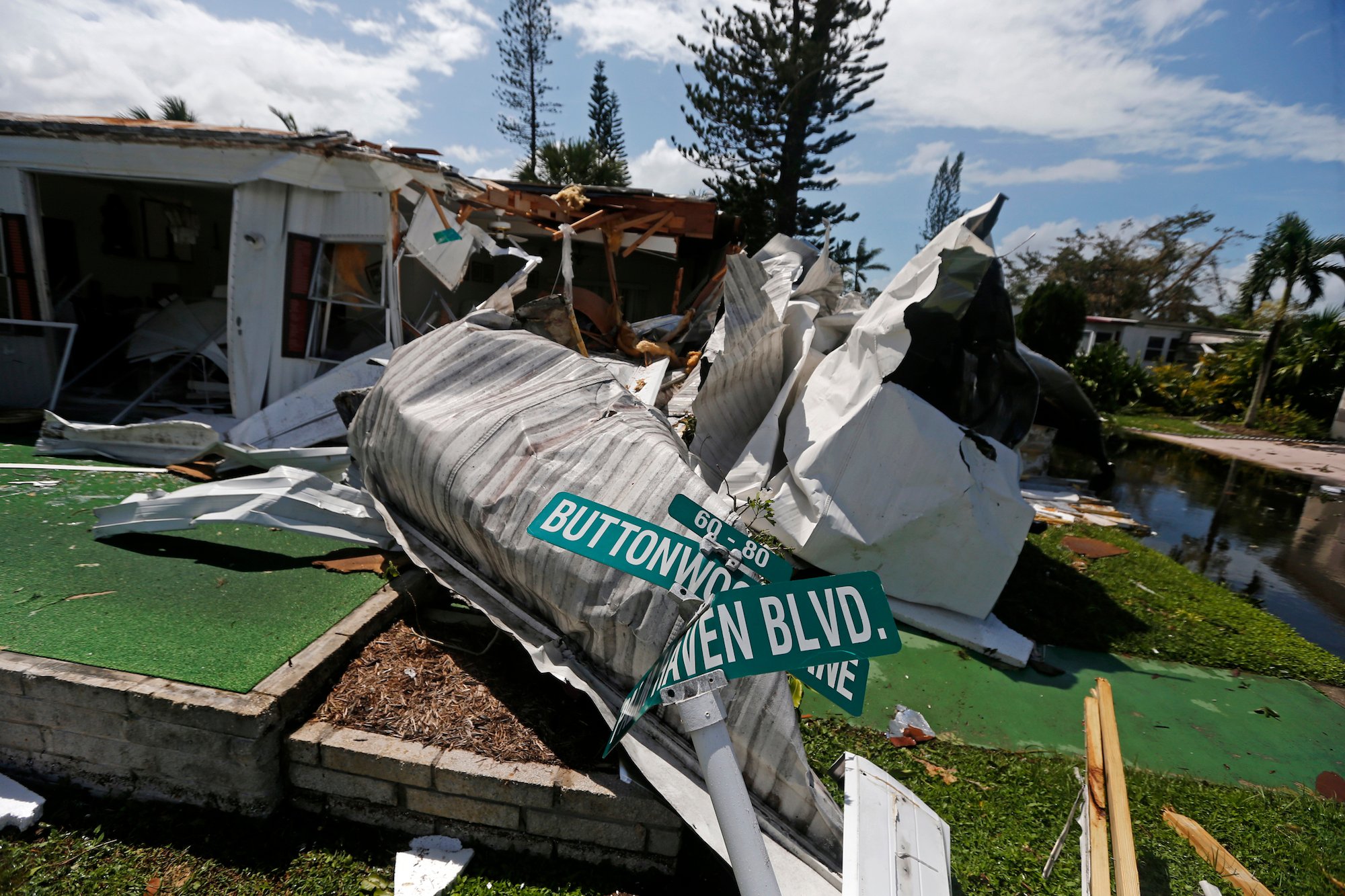- Hurricane Irma’s destruction could cost $50 billion in the US. Residents across the Caribbean and Florida were starting to assess the damage on Monday. Recovery will take months – or even years – in the areas hardest hit. The storm is still hitting Georgia, Alabama, and the Carolinas.
Hurricane Irma was one of the strongest storms ever recorded in the Atlantic Ocean, and its damage is just starting to emerge as the heavy rains and destructive winds give way to sunshine.
Irma battered southern and western Caribbean islands last week as a massive Category 5 storm before crossing Cuba and the Bahamas and then making landfall on Florida’s west coast on Sunday.
As the storm finally left Florida on Monday and headed across Georgia, residents in the Sunshine State began assessing the havoc Irma wrecked amid flooded streets and lawns strewn with boats, mobile homes, cars, and debris.
Three people in Georgia, one person in South Carolina, and seven people in Florida have died in the storm, bringing the total death toll to at least 48 people. That number is expected to rise.
Overall, the destruction hasn’t appeared to be as bad as officials feared, with Irma heading up the western coast of Florida instead of straight up the middle as it was forecast to on Thursday. But a Citi analyst still estimates that costs could top $50 billion in the US.
Not as bad as Floridians feared
Many residents who evacuated Miami when forecasters predicted it would take a direct hit found themselves in the storm's path after the hurricane turned and headed for Tampa on the west coast.
Gov. Rick Scott of Florida said more than 6.5 million Floridians had been ordered to evacuate, and by Sunday morning 114,000 people were seeking refuge in 500 shelters statewide.
"My heart goes out. There's devastation. I just hope everybody survived," Scott said after surveying the damage via plane with the US Coast Guard, the Miami Herald reported. "For our entire state, especially the Keys, it's going to be a long road."
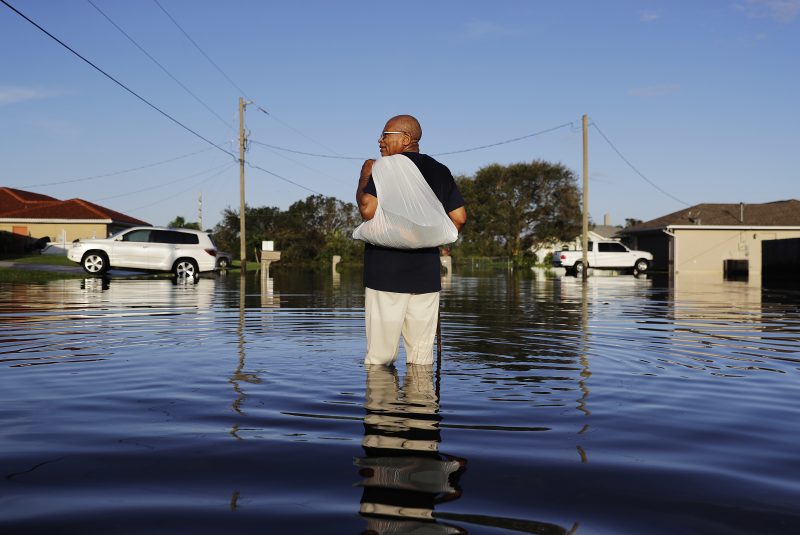
While all Florida interstates were open by Monday afternoon, Scott urged residents to take their time returning home so that officials could perform search and rescue missions in the floodwaters and wind-whipped homes.
Many secondary roads were still full of downed power lines, trees, and other debris (if they weren't flooded) on Tuesday morning, and would take at least days to clear.
To complicate matters, the gasoline supply in the state is dwindling and most grocery store shelves are wiped clean, since so many people rushed to get fuel and food before the storm, so even if residents return in the coming days, they may not have the supplies they need.
Storm surge scoured out US-1 highway near Bahia Honda state park in #FloridaKeys #Irma pic.twitter.com/O3wkWkZZ2y
— Mike Theiss (@MikeTheiss) September 11, 2017
By Tuesday morning, over 5.5 million homes and businesses in Florida were still without power, with another 1.3 million power failures in Georgia, 250,000 in South Carolina, and about 150,000 in North Carolina. Most of Puerto Rico is still without power as well.
Power companies raced to restore electricity, repairing power lines toppled by Irma's winds. The US Environmental Protection Agency has waived pollution-control rules to allow utilities to burn whatever fuel they need to restore power. Pollution levels spiked after a similar decision was made after Hurricane Harvey in Texas, the Associated Press found.
In the Florida Keys, which suffered a direct blow from Irma at Category 4 strength, the roads and bridges were destroyed by the powerful storm surge when the storm's strong winds blew walls of water onto the chain of islands. Scott said Monday that residents could begin to return only when officials inspected and cleared the 42-bridge Overseas Highway, according to the AP.
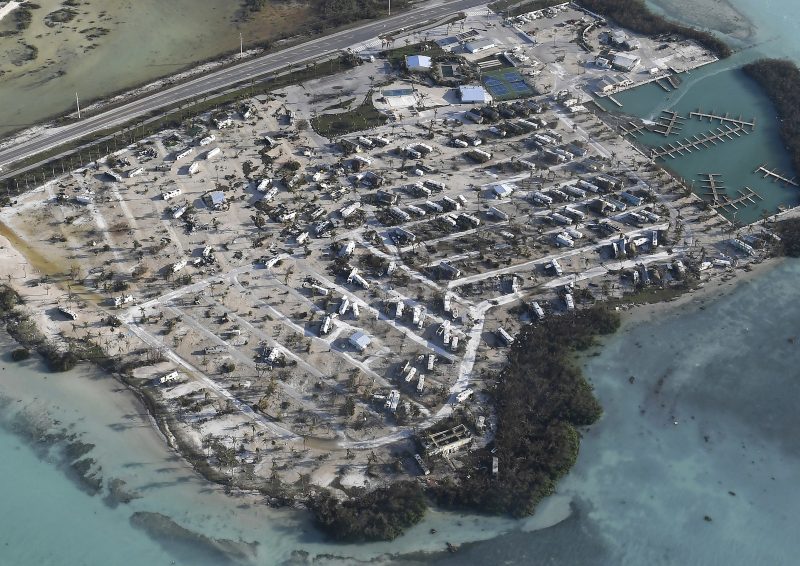
Many Florida cities, including Miami and Tampa, instated curfews overnight Sunday and Monday seeking to reduce looting.
In areas like Jacksonville, where floodwater reached waist-high, rescue workers scoured the still-swamped streets on Monday to pull people out.
Before the storm hit, Scott ordered all 7,000 members of Florida's National Guard to report for duty, and nearly 14,000 total members from Florida and other states had evacuated over 12,000 citizens by Monday.
President Donald Trump declared states of emergency in Florida, Puerto Rico, and the US Virgin Islands on Tuesday evening to free up federal resources to respond to the storm.
The devastation left by Hurricane Irma was far greater, at least in certain locations,than anyone thought - but amazing people working hard!
— Donald J. Trump (@realDonaldTrump) September 12, 2017
The Senate passed a $15 billion aid package for Hurricane Harvey on Thursday, but it would need to allocate more funds for Irma since the Federal Emergency Management Agency is running dangerously low on money for disaster relief.
The US military deployed nine ships, including the aircraft carrier USS Abraham Lincoln, to the Florida Keys, US Virgin Islands, and Puerto Rico to bring food, water, supplies, and support to the American territories in what the White House homeland security adviser, Tom Bossert, called one of "the most powerful naval relief flotillas in recent memory."
Caribbean islands don't look the same
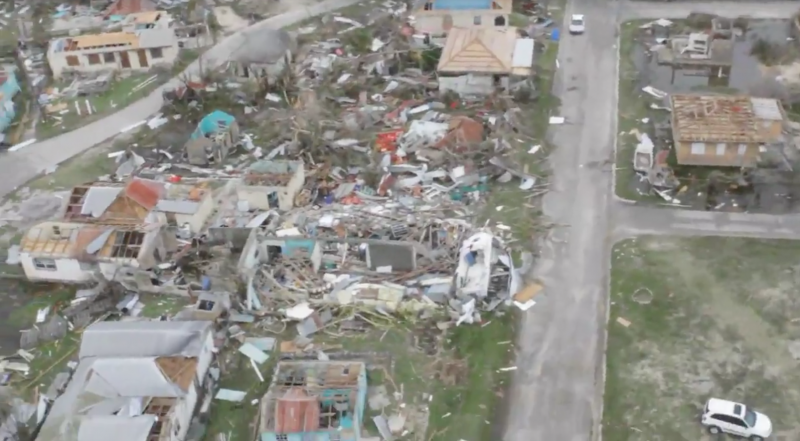
While many Americans focused on the devastation hitting home, several Caribbean islands were reduced to "rubble."
Barbuda, a 62-square-mile isle in the Leeward Islands, was "totally demolished," said the nation's prime minister, Gaston Browne, wiping out 90% of structures. It could take $100 million to rebuild.
Satellite images of the Virgin Islands before the storm showed lush greenery that was stripped of vegetation and turned brown after Irma swept through them with 185 mph winds:
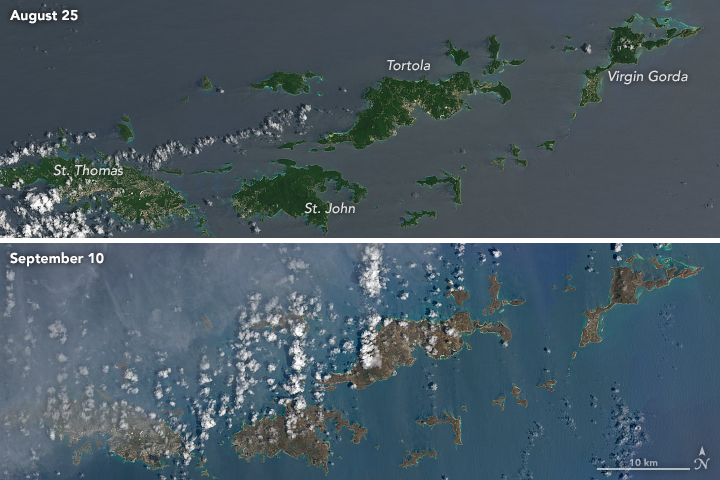
Waves 16 feet high struck Cuba on Saturday, forcing a million people to evacuate inland.
Across the Caribbean, Irma left thousands homeless and sent recovery costs skyrocketing into at least billions of dollars.
It will most likely take months, if not years, for areas to return to some sense of normalcy.

